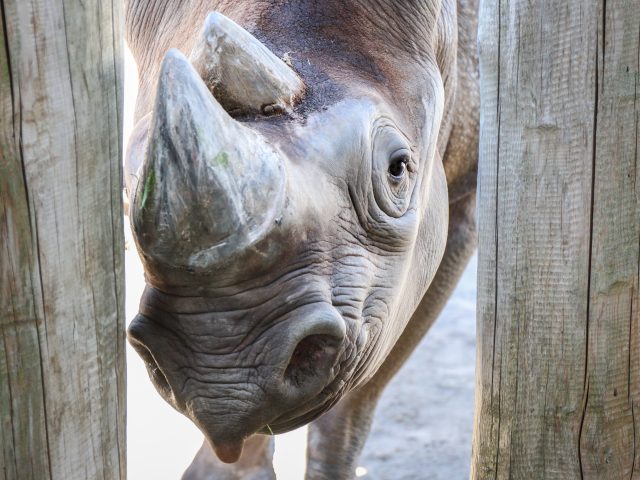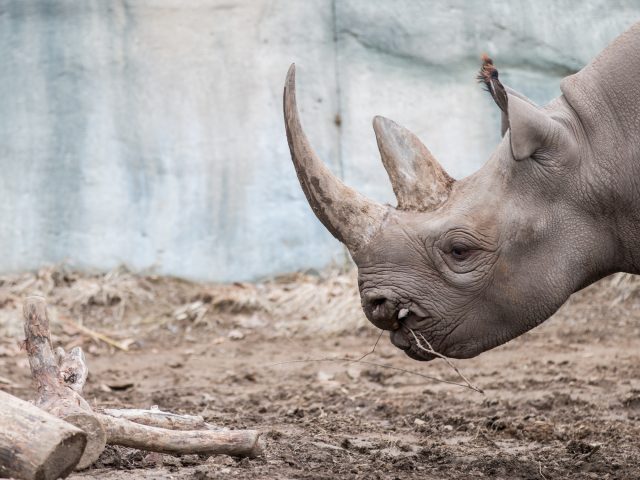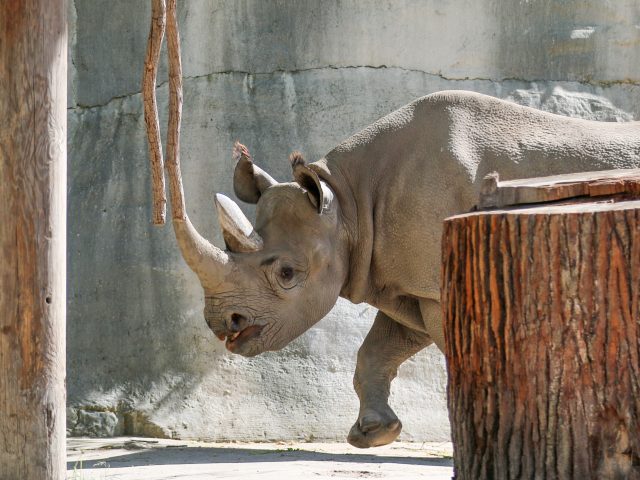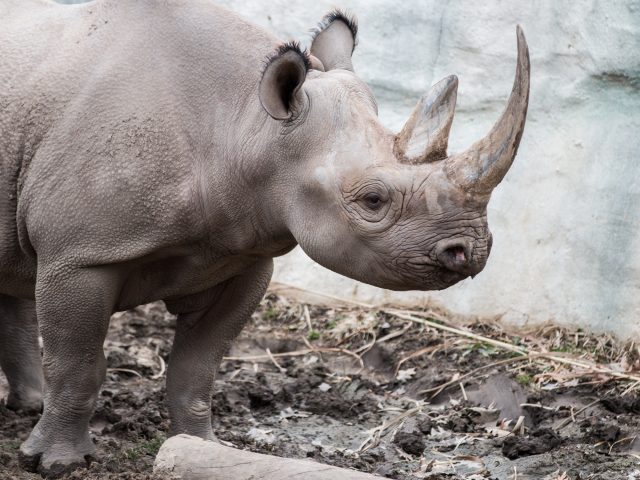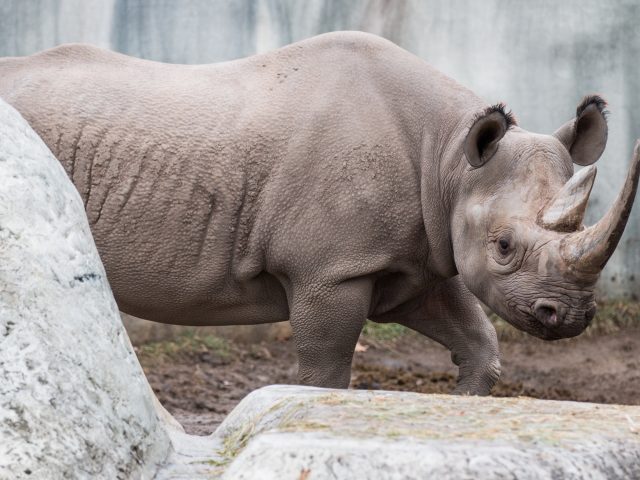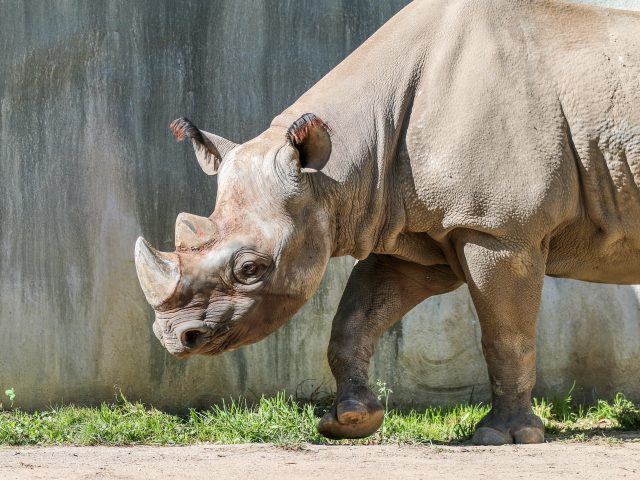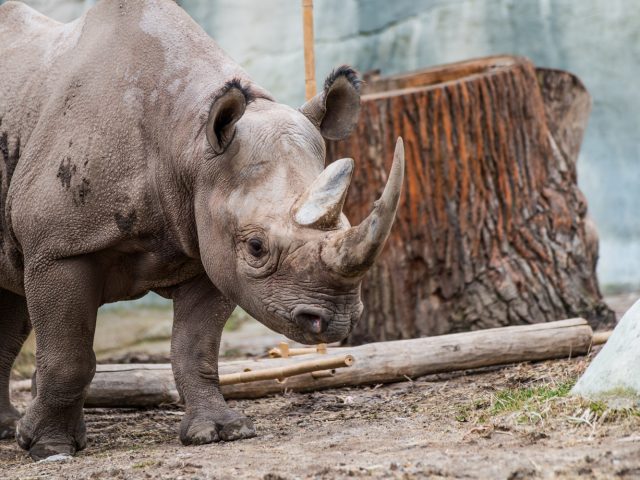Characteristics
The black rhinoceros is best known for its two horns protruding from the skull, which are made of keratin. They have thick skin which protects them from the sharp grasses and thorns found in the African savannah. A black rhino’s upper lip is prehensile, and is used to grasp leaves and twigs when eating. Due to poor eyesight they rely on their senses of smell and hearing to navigate their environment. Those big ears have a wide range of rotation which helps them detect sounds. Black rhinos are not actually black, as their name may indicate, but are gray. Their skin color may vary due to local soil conditions and wallowing behavior.
Behavior
Black rhinos are solitary animals, only coming together to mate. If food and water are readily available they may have a smaller home range than when those items are scarce. They may also tolerate the presence of other rhinos. When threatened the black rhino can be extremely aggressive and their signature method of attack is to charge. Because of their poor eyesight this can happen quite quickly and frequently.
Did You Know?
- Black rhinos are very fast and can reach speeds of 35 mph. Black rhinos run on their toes.
- The word rhinoceros comes from two Greek words: Rhino means nose, and ceros means horn.
- Because of their tank-like build and deadly horns, rhinos have no natural predators.
Our Animals
Our female rhino, Doppsee, is from the Sedgwick County Zoo in Kansas and was born in 2007. Our male rhino, Phineus, traveled to Lansing in 2017 from the Caldwell Zoo in Texas. He was born in 2007. The pair had a male calf in 2019 named Jaali.
Quarters for Conservation
This year, we are raising funds to support the International Rhino Foundation (IRF) through our quarters for conservation program. The IRF is a non-profit organization dedicated to preserving rhino populations across the globe. To find out more about the IRF and how you can contribute towards their cause, visit their website here.
